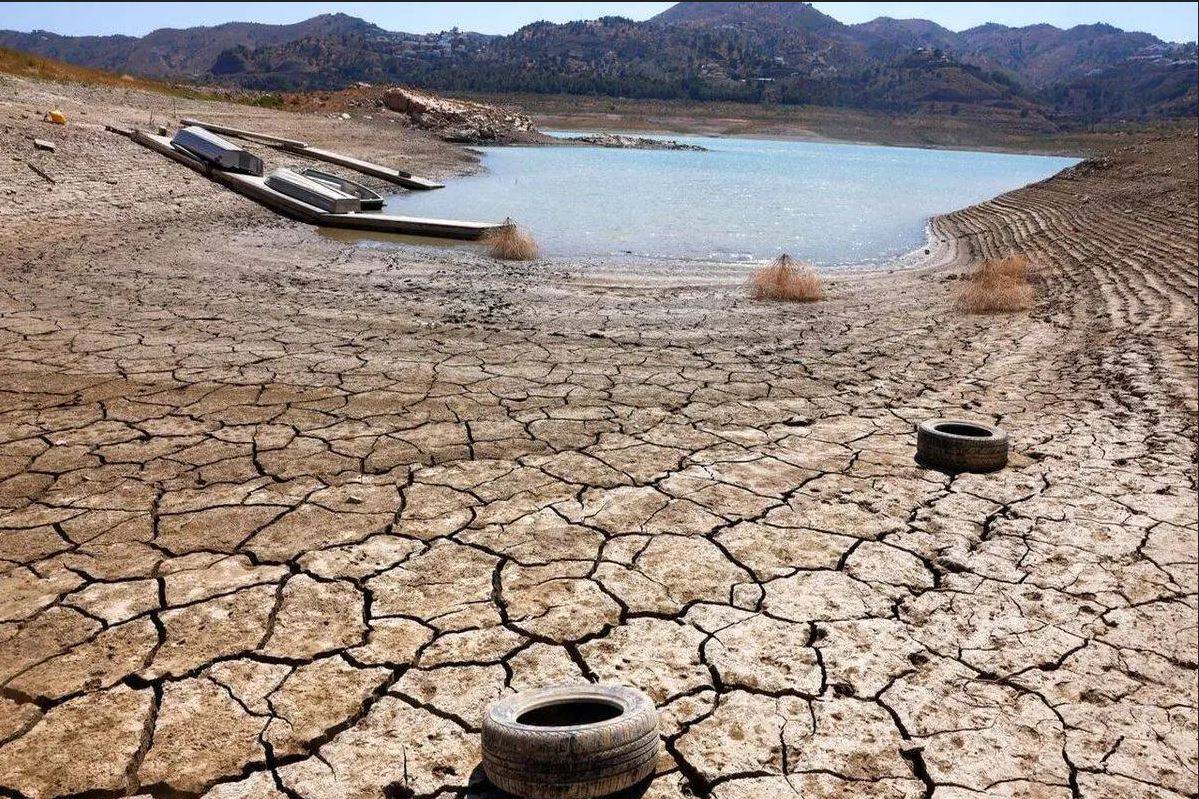1388 Views
Israel’s Holy War for Water: Prayers on the Galilee, Plunder in the Golan
When occupation and greed found a regime, its instinct in times of crisis is predictable: to take more.
Now facing the worst drought in a century, Israel’s inherently predatory and expansionist nature— to seize the lands and resources of others — has grown even sharper.
In mid-August, the Israeli outlet VIN NEWS reported that heat levels in Israel are breaking new records each year, water resources in the north are drying up, and the Water Authority has issued a clear warning: “This is an exceptionally severe drought.”
Hezi Lifshitz, head of the Water Authority, told Ynet:
“As far as we are concerned, this is already a drought year — one unlike anything seen in the past hundred years. The northern water reserves are critically low, and the Banias River is almost dry. The Ministry of Finance will soon have to declare an economic and agricultural drought formally.”
The occupied lands are now enduring one of the harshest dry spells in their history. This crisis has been a motive to control and try to access the water resources beyond official borders. The Sea of Galilee and the Banias River — the regime’s key freshwater sources — have hit historic lows, crippling agriculture in the north.
Things are so desperate that on October 30, thousands of Israelis, led by Kabbalist leader Shmuel Eliyahu, gathered in the Galilee to pray for rain. Media loyal to the regime reminded people that unusually wet winters followed similar “rain prayers” in 2003 and 2019.
Lifshitz added:
“Last winter broke all records — in the worst way. The Kinneret never rose at all. It’s unprecedented.”
Israel’s agriculture industry consumes about 1.2 billion cubic meters of water each year, from fresh, recycled, and saline sources.
The regime runs several desalination plants in Hadera, Ashkelon, Ashdod, Sorek (two complexes), and Palmahim. Yet these “solutions” come with their own problems: each plant consumes nearly 0.5% of Israel’s total electricity, a massive energy burden.
Given its long record of resource plunder, it’s no surprise that Tel Aviv’s response to drought is not conservation but conquest.
Taking advantage of a weak and unpopular Syrian government, Israel has stepped up incursions into southern Syria — not just for security, but for water.
Israel’s Grip on Southern Syria
The regime’s presence in southern Syria can be examined in two distinct phases — one historical, and the other more recent.
Long-term Occupation: The Golan Heights
The Zionists have occupied Syria’s Golan Heights since 1967. This area is naturally rich in water resources and holds immense strategic importance.
Exploiting the chaos of Syria’s civil war and the weakness of its central government, the regime has expanded its influence and physical presence across the country’s southern provinces — including Daraa and Quneitra. This presence has gone far beyond military control, extending into economic leverage and domination over vital infrastructure.
According to multiple reports, the Zionists now control several major dams and key water sources in southern Syria. This control is exercised both through direct military occupation and through indirect arrangements with local groups.
Using the chaos of Syria’s civil war, Israel has entrenched itself not only militarily but also economically, tightening control over vital water infrastructure.
Key water assets now under Israeli control:
Al-Manṭarah Dam – the largest in southern Syria; seized by Israeli forces in January 2025.
Al-Wahda Dam – part of the Yarmouk River basin. Control here gives Israel dominance over nearly 40% of the shared Syrian-Jordanian water resources.
A chain of dams along the Raqad stream – including Ghadir al-Bustan, Jisr al-Raqad, Shabraq, Sahim al-Jolan, and Ubaydin — all targeted by Israeli operations near the occupied Golan.
Springs and underground aquifers – Reports indicate Israel is drilling both vertically and horizontally in the Mount Hermon region, redirecting subterranean water flows into occupied territory.
The Human Toll
The occupier army’s control over water resources, combined with the effects of natural drought, has had devastating consequences on the lives and economy of southern Syria’s residents.
Southern Syria — once the country’s “breadbasket” — is collapsing under a dual assault of natural drought and Israeli control.
Crops are failing, livelihoods are vanishing, and entire villages are emptying.
Alongside water theft, Israel sends in shipments of wheat and fuel to the border zones, creating a dependent local economy that serves its strategic goals.
Shortages of drinking and sanitation water have worsened public health and driven new waves of internal displacement.
Conclusion
Israel’s unprecedented water crisis has turned into a geopolitical weapon.
By exploiting Syria’s post-war vacuum, the regime is securing its own water future through the militarized seizure of another nation’s rivers and dams.
Behind Tel Aviv’s “prayers for rain” lies a brutal truth:
When heaven doesn’t send rain, they mercilessly steal it from their neighbors.
https://www.ynetnews.com/health_science/article/bkoeuyndxl
https://www.ynetnews.com/jewish-world/article/s1wu0fekwe
https://www.timesofisrael.com/facing-drought-israel-to-direct-desalinated-water-to-sea-of-galilee-in-world-first/
https://www.irna.ir/news/85967421
https://www.palestinechronicle.com/the-disintegration-of-syrias-government-and-israels-insidious-plot/
https://www.nextcenturyfoundation.org/occupied-waters/

Comment
Post a comment for this article